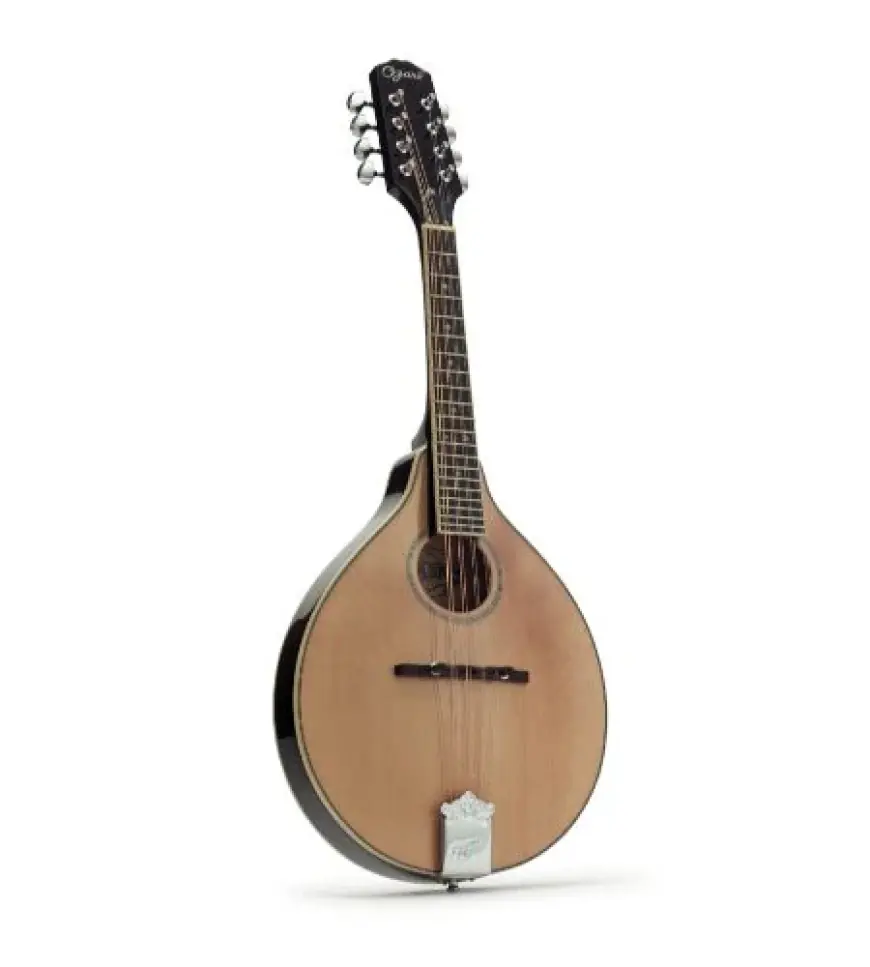The History and Evolution of Mandolins: A Deep Dive into the Iconic Instrument
Mandolins

The mandolin is one of the most recognized stringed instruments, known for its bright, vibrant sound that can captivate audiences in both classical and folk music genres. Its distinctive, sharp tones and elegant design have made it an essential part of many different music styles across the globe. This article takes a closer look at the mandolin, its history, evolution, and how it continues to captivate musicians and audiences worldwide.
The Origins of the Mandolin
The history of the mandolin can be traced back to the 17th century in Italy. Its predecessors, the mandola and liuto, were part of the lute family. The early mandolins shared similar features with the lute, a pear-shaped stringed instrument that was prominent during the Renaissance and Baroque periods. Over time, the mandolin began to differentiate itself, thanks to its smaller size and brighter, sharper tone, which appealed to both musicians and composers.
The earliest versions of the mandolin had only four courses of strings, tuned in pairs, similar to the lute. However, by the 18th century, makers began to experiment with adding more strings and refining the mandolin’s design. These innovations allowed the mandolin to be used in more diverse musical settings, particularly in the courtly music of the Italian Baroque.
The Mandolin's Evolution
During the 19th century, the mandolin's popularity spread across Europe and the United States, where it was integrated into both folk and classical music traditions. As the instrument evolved, it saw some notable changes:
-
String Configuration: The mandolin initially featured four courses of paired strings, but later models began to adopt the modern eight-string configuration (four courses of double strings), which is still in use today.
-
Body Shape and Size: Early mandolins were quite small and had a rounded back. In the 19th century, the design changed to feature a more shallow, flat-back body. This design change helped improve the instrument’s projection and tonal clarity, making it better suited for larger performances and orchestras.
-
Neck and Fingerboard: The evolution of the mandolin's neck and fingerboard was essential to its increased popularity. The fingerboard was extended, allowing for more complex techniques, such as fast tremolos and intricate fingerpicking.
-
The Addition of the "F" Style Mandolin: One of the most significant innovations in mandolin design came with the development of the "F" style mandolin, popularized by Gibson in the early 20th century. The F-style mandolin features a carved top and back, along with an F-shaped sound hole, which gives it a louder, more vibrant sound that is ideal for bluegrass and folk music.
The Mandolin’s Role in Music
The mandolin is unique in its versatility, being used in a wide range of musical genres. From its origins in classical music to its role in bluegrass, folk, and country, the mandolin has left a lasting mark on the musical landscape.
Classical Music
The mandolin’s initial popularity was tied to classical music, especially in the Baroque period. Composers like Antonio Vivaldi wrote mandolin concertos, showcasing the instrument’s bright, sparkling tone and fast-playing capabilities. The mandolin was often used in orchestral settings or as a solo instrument.
While the mandolin’s presence in classical orchestras declined by the 19th century, it remained an essential part of the musical landscape in Italy, especially in folk music and traditional ensembles.
Folk, Bluegrass, and Country Music
In the United States, the mandolin found a new home in folk, bluegrass, and country music during the 19th and 20th centuries. Its sharp, percussive sound made it ideal for these genres, where it provided rhythmic drive and melodic solos. Mandolin players like Bill Monroe, who founded the Blue Grass Boys, were key figures in popularizing the instrument in American bluegrass music.
The distinct "chop" sound made by the mandolin is a crucial part of bluegrass music’s rhythm section, and its fast, intricate melodies continue to be a hallmark of bluegrass performances.
Pop and Rock Music
While the mandolin is most often associated with traditional folk or bluegrass music, its use in pop and rock genres has also gained momentum in recent decades. Artists like R.E.M., Led Zeppelin, and The Decemberists have integrated the mandolin into their songs, showing the instrument’s versatility and adaptability across genres.
The mandolin’s ability to blend into different musical styles has made it a staple in various recordings, often providing an earthy, rustic sound that contrasts with electric instruments.
The Mandolin in Modern Music
Today, the mandolin is still an important instrument in both traditional and contemporary music. In the bluegrass scene, where the mandolin remains one of the key instruments, musicians continue to push the boundaries of what the mandolin can do, incorporating it into fast-paced solos, duets, and intricate fingerpicking arrangements. Mandolin players like Chris Thile (of Punch Brothers) have become influential figures in the modern bluegrass and acoustic music scenes, demonstrating the instrument's technical possibilities and emotional range.
The mandolin is also finding its way into the world of world music, with artists from different cultures using it to blend with traditional instruments. In India, the mandolin was adapted into Carnatic music, where it gained recognition thanks to the virtuosity of players like U. Srinivas.
Mandolin Techniques and Playing Styles
Playing the mandolin requires specific techniques and skills that are unique to the instrument. Some of the key playing styles include:
-
Tremolo: One of the most distinct features of the mandolin’s sound is its tremolo, a rapid, oscillating technique that creates a shimmering, resonant tone. This technique is often used in both solo performances and accompaniment.
-
Flatpicking: This is the most common style of playing for mandolinists, where a pick is used to strike the strings, creating a sharp, bright sound.
-
Fingerpicking: Similar to flatpicking, fingerpicking involves using the fingers to pluck the strings. This technique is often used in folk and bluegrass music for more intricate melodies.
Mandolin Makers and Modern Innovations
Mandolin makers have contributed significantly to the evolution of the instrument, with craftsmanship and design playing a pivotal role in shaping its sound and playability. Well-known makers such as Gibson, Collings, and Weber have continued to produce high-quality mandolins that cater to both professional musicians and enthusiasts.
Additionally, modern innovations have led to the development of electric mandolins, which are becoming increasingly popular in contemporary music. These instruments have made it easier for mandolinists to perform in amplified settings, opening up new avenues for experimentation and collaboration with other genres.
Conclusion
The mandolin's long history and continued relevance in music make it a fascinating instrument. From its Baroque origins in Italy to its prominent place in bluegrass and modern rock, the mandolin has proven to be an adaptable and enduring musical tool. As the instrument evolves, it continues to inspire both seasoned professionals and aspiring musicians alike. Whether in the hands of a classical virtuoso or a modern bluegrass player, the mandolin remains a symbol of musical expression that transcends time and borders.
What's Your Reaction?
 Like
0
Like
0
 Dislike
0
Dislike
0
 Love
0
Love
0
 Funny
0
Funny
0
 Angry
0
Angry
0
 Sad
0
Sad
0
 Wow
0
Wow
0


















































